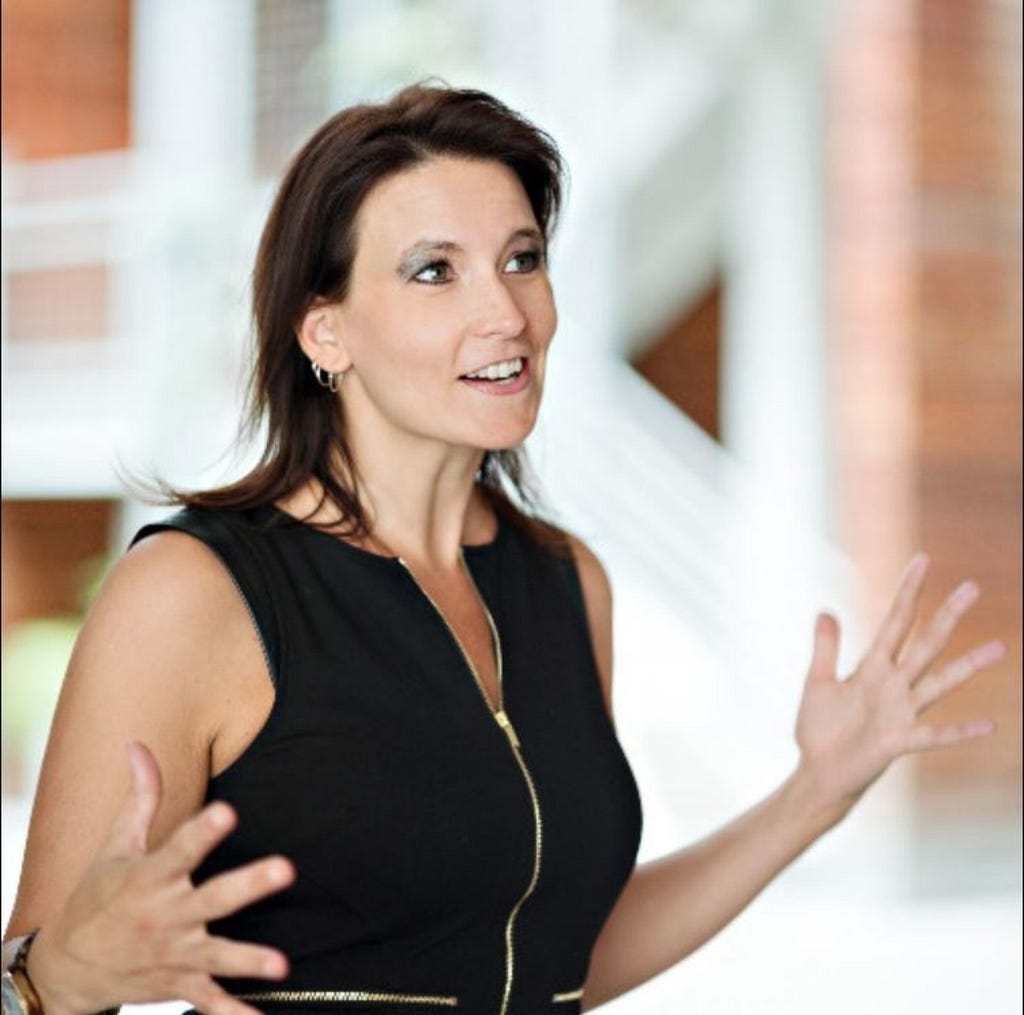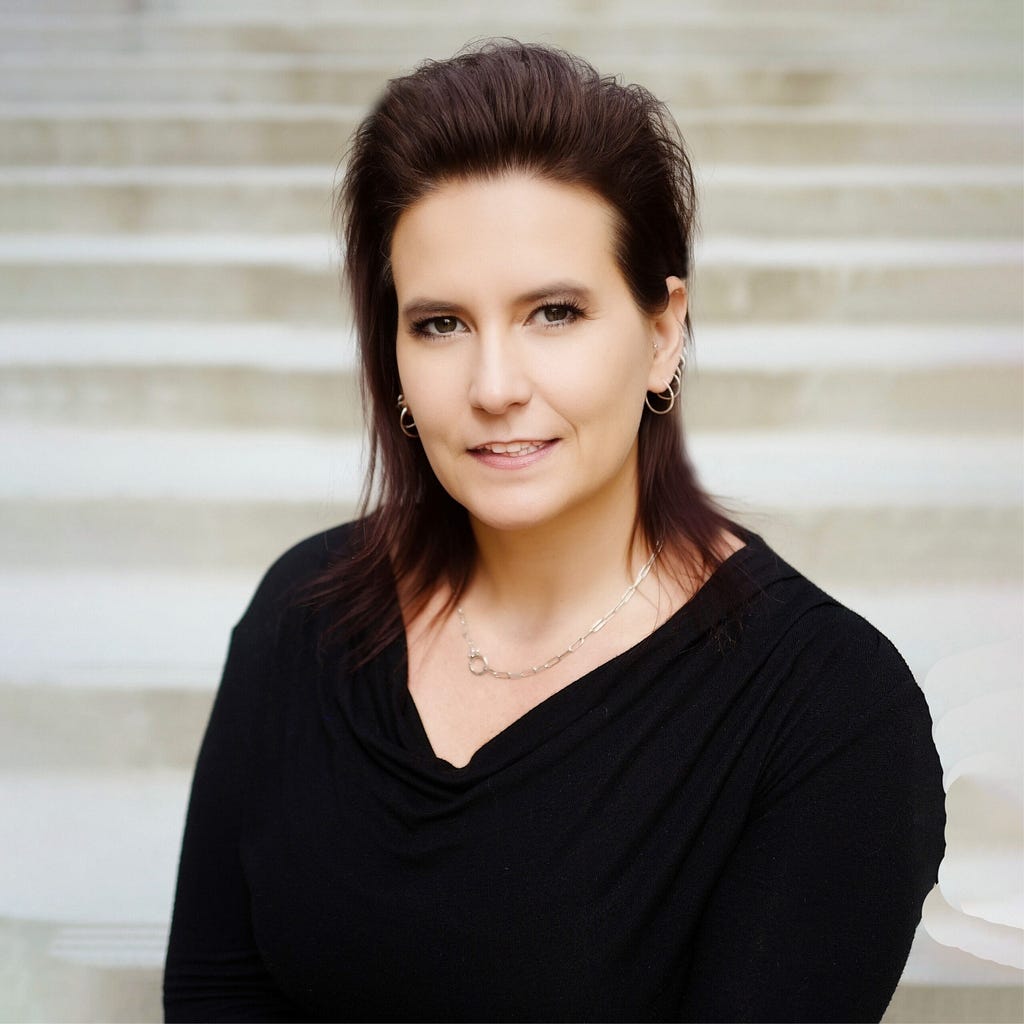Joslyn Balzarini Of HKS: Five Things You Need To Create A Highly Successful Career As A Commercial Designer
An Interview With Athalia Monae
Never say “no” to opportunity: If someone asks you for assistance in an area where you have little to no experience, say “yes” and use it as an opportunity to learn something new.
As a part of my series about the ‘Five Things You Need To Know To Create A Highly Successful Career As A Commercial Designer,’ I had the pleasure of interviewing Joslyn Balzarini, principal and commercial interiors studio practice leader at HKS in Seattle. Her projects have been featured in nationally recognized trade publications, including Interior Design Magazine, Architizer, Architect and Gray Magazine, and she has also been named one of Seattle Magazine’s Daring Women.
Thank you for joining us today! Can you share the story of what led you to pursue a career in commercial design?
I’ve wanted to be a commercial interior designer since I was a young girl. My family worked in the trades, so growing up on job sites, I always loved watching things transform from nothing into the built environment and learning how to create impact that is still felt today.
What’s the most interesting or amusing experience you’ve had in your career so far, and what lesson did you learn from it?
In my career, I’ve been lucky enough to run the gamut in terms of project types, from local conference rooms in Seattle to entire city blocks in Saudi Arabia. I’ve held every kind of position, from designer to project architect to manager, taking the time to learn every aspect of commercial interior design to be in a position where I feel ready for anything. There’s always so much to learn. The biggest lesson I’ve taken away from these experiences is to never say “no,” especially in the first ten years of your career. Being eager and always wanting to learn helped me get to where I am today.
Do you have a favorite life lesson quote? Can you share a story about how it has been relevant in your life?
I always say that if you’re comfortable, you’re not learning, and if you’re not learning, you’re irrelevant.
In this marketplace, especially in the age of technology, the way you did something before doesn’t have much bearing on the way things are going to be done in the future. Because the world around us is changing so rapidly, people need to embrace being lifelong learners in order to stay ahead. Another one of my favorite quotes is by Saul Bass, who says, “I want to make beautiful things, even if nobody cares.” I live by this saying both in my personal and professional life, striving to leave the world a better place and create beautiful experiences that bring joy and harmony to the people around me.
As a successful business leader, which three character traits have been most crucial to your success? Can you share a story or example for each?
- Empathy: Life ebbs and flows. There will be times when you feel creative and full of energy, and there will be times when you feel distracted or not yourself. Everyone goes to work with whatever they’ve got on their shoulders on a given day, so being empathetic to the fact that we’re all human and doing the best we can in a particular moment is key to building loyalty.
- Authenticity: As a leader, I don’t mind if my direct reports know my vulnerabilities. When you’re transparent about your strengths and weaknesses, you encourage a culture of authenticity and expression, creating new opportunities for employees to join the table. The more ideas you bring into the conversation, the more opportunities you have to build success.
- Ambition: Don’t be afraid to try new things. Having an entrepreneurial mindset can open the door to new experiences and opportunities for growth, recognition and success in your career.
Can you describe a recent project you completed and what your specific contributions were?
As a studio, we recently celebrated the completion of a commercial interiors project for a prominent tech company based in San Diego. As the project manager, I oversaw the consolidation part of this company’s C-suite and regional team into a new office that married branding with contextual flair to bring the client’s vision to life. Inspired by San Diego’s tranquil beaches and calming landscapes, we designed the client’s new office as a “beach house,” equipped with digital assets that surprise and delight employees with subtle cues to the region’s seaside environment.
How do you approach balancing aesthetics and functionality in your designs?
As designers, we are responsible for delivering beautiful spaces that function as intended, both on time and within budget. The key is to build a team comprised of people who represent this balance, making sure aesthetics and functionality are both part of the program. I’m a pragmatic person by nature, so if something doesn’t function, it’s not beautiful to me. When working together and leaning into each other’s creative strengths, we’re able to bring high design to any type of project.
What is your design philosophy when it comes to commercial spaces?
Make time to listen and do your research: During the onset of a project, many architects and designers will immediately start drawing without asking questions. Those who are wired to problem-solve without fully understanding client needs can end up slowing down the approvals process due to misalignment on goals and expectations for success.
Where do you draw your inspiration for your designs?
At the beginning of every new project, I work closely with my team to conduct extensive research on the client and local context to ensure culture and surrounding influences are reflected in our final design recommendations. To deepen this data collection process, we schedule visioning sessions with stakeholders to better understand the company’s ethos and most pressing design needs.
What strategies do you use to ensure your designs meet the needs of the end-users?
During our visioning sessions, we connect with stakeholder representatives from various departments within the company, ensuring all voices are heard before launching into the official design process. To deepen our understanding of client needs, we often request demographics to determine the duration and frequency of employee commutes, which also shape the end-user experience and what types of spaces can be designed inside the facility to bring people together. Because that’s what we’re trying to accomplish at the end of the day–creating opportunity for meaningful interactions and experiences.
How do you approach sustainability in your commercial projects?
Sustainability holds different meanings to different people. For some, it’s as literal as going for LEED or WELL certifications, while others take a more liberal approach, aiming to reduce embodied carbon or incorporate healthy building materials. More recently, however, it’s been discussed in the context of inclusivity and accessibility, as more companies move to provide neurodivergent spaces for their end-users. It’s a constantly evolving topic and one that will continue to have a profound impact on environmental and human health, as well as define our legacy as designers and architects.
What impact do you think remote work and digital transformation will have on the design of commercial spaces?
The question that we’re focused on right now is, “How do we create the most egalitarian experience for those in hybrid scenarios, when you have some people in the office, some people at home and some people gathered in a different building?” One of the joys of being in person is that you can read body language. To emulate that experience and strengthen remote interactions, we are exploring new ways to configure space and use advanced conferencing technologies that can enlarge content and better position people in frames. This not only enhances human connection and collaboration on projects, such as the design of commercial spaces, but also improves relationships in the long term.

What are the five things you believe are essential for creating a highly successful career in commercial design? Can you share a story or example for each?
- Never say “no” to opportunity: If someone asks you for assistance in an area where you have little to no experience, say “yes” and use it as an opportunity to learn something new.
- Embrace lifelong learning: Don’t limit yourself to doing what’s comfortable. Instead, seek out opportunities to continue growing, meeting new people, and exploring new project types.
- Empathize with others: Not every day will be a walk in the park, so finding grace and understanding that everyone tries their best is key to establishing respect and loyalty.
- Be an entrepreneur: Believe in yourself and don’t be afraid to show people what you’re made of — recognition and success will follow.
- Have fun! We’re working to make the world a better, more sustainable place, so having fun alongside your colleagues and finding humor in everyday life can be extremely valuable.
What role do you think commercial design plays in community building and social interaction?
Whether you’re dining at a restaurant or watching your favorite sports team compete at a local stadium, all commercial spaces are centered around community and social interaction. If you successfully remove barriers to entry, both physical and emotional, you can create frictionless experiences that shape people’s outlook and have them coming back for more time and time again.
Given your influence, if you could inspire a movement to bring the best results and solutions to the greatest number of people, what would it be? You never know what impact your idea might have!
As a woman in a historically male-dominated industry, I want to help create opportunities for diverse voices to join the decision-making table. By empowering people to bring their authentic selves to work, I hope to build a culture of innovation inspired by our unique experiences and points of view.
How can our readers follow your work online?
Feel free to connect with me on LinkedIn or view my profile on the HKS website!
Thank you for your time and excellent insights! We wish you continued success.
Joslyn Balzarini Of HKS: Five Things You Need To Create A Highly Successful Career As A Commercial… was originally published in Authority Magazine on Medium, where people are continuing the conversation by highlighting and responding to this story.
